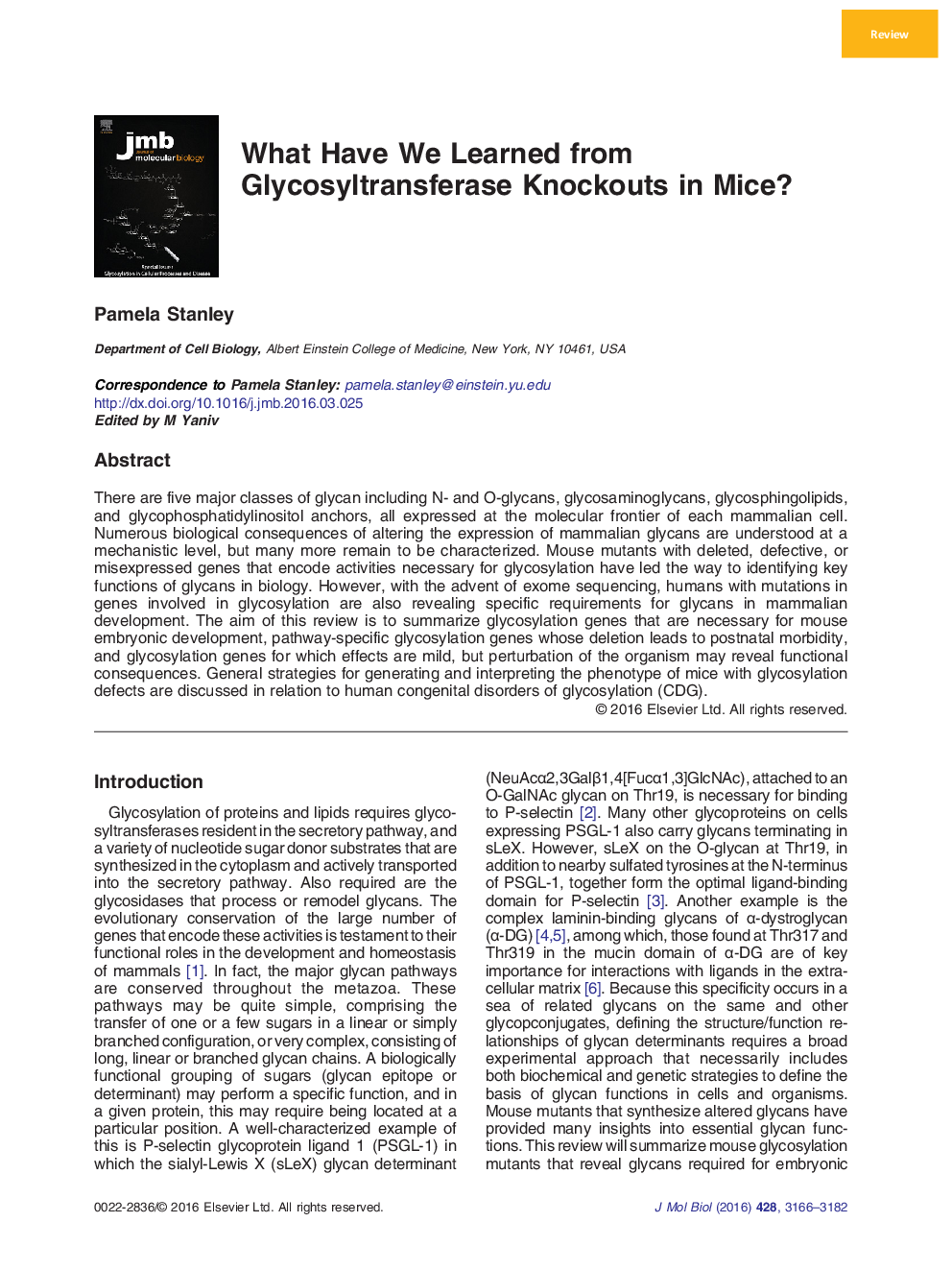| کد مقاله | کد نشریه | سال انتشار | مقاله انگلیسی | نسخه تمام متن |
|---|---|---|---|---|
| 2184245 | 1095815 | 2016 | 17 صفحه PDF | دانلود رایگان |
• Glycosyltransferase gene knockouts that are embryonic lethal in mammals
• Glycosyltransferase gene knockouts that give rise to postnatal morbidity
• Glycosyltransferase gen knockouts that have few consequences
• Mouse models of human disease – congenital diseases of glycosylation
There are five major classes of glycan including N- and O-glycans, glycosaminoglycans, glycosphingolipids, and glycophosphatidylinositol anchors, all expressed at the molecular frontier of each mammalian cell. Numerous biological consequences of altering the expression of mammalian glycans are understood at a mechanistic level, but many more remain to be characterized. Mouse mutants with deleted, defective, or misexpressed genes that encode activities necessary for glycosylation have led the way to identifying key functions of glycans in biology. However, with the advent of exome sequencing, humans with mutations in genes involved in glycosylation are also revealing specific requirements for glycans in mammalian development. The aim of this review is to summarize glycosylation genes that are necessary for mouse embryonic development, pathway-specific glycosylation genes whose deletion leads to postnatal morbidity, and glycosylation genes for which effects are mild, but perturbation of the organism may reveal functional consequences. General strategies for generating and interpreting the phenotype of mice with glycosylation defects are discussed in relation to human congenital disorders of glycosylation (CDG).
Graphical AbstractFigure optionsDownload high-quality image (213 K)Download as PowerPoint slide
Journal: Journal of Molecular Biology - Volume 428, Issue 16, 14 August 2016, Pages 3166–3182
